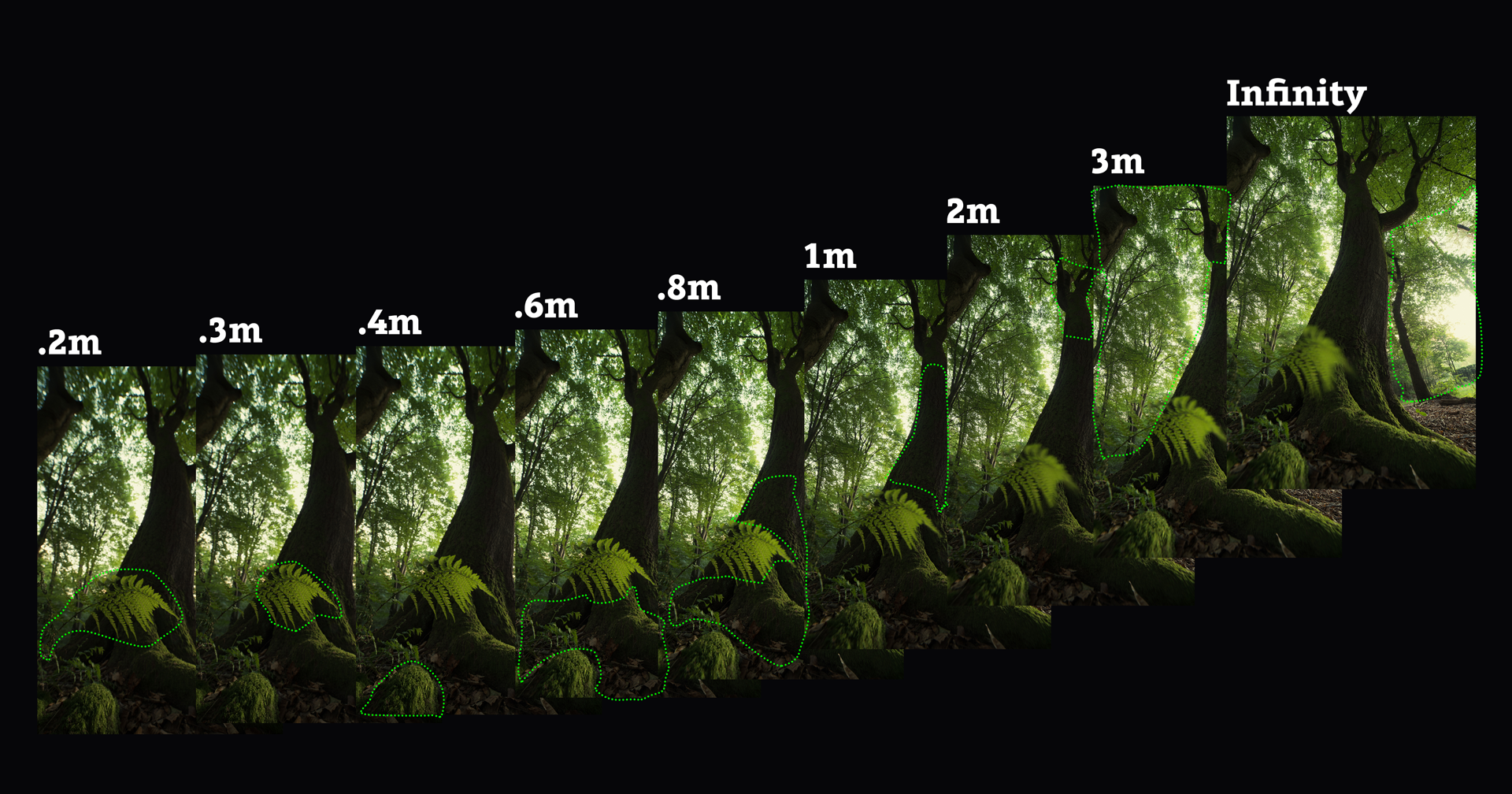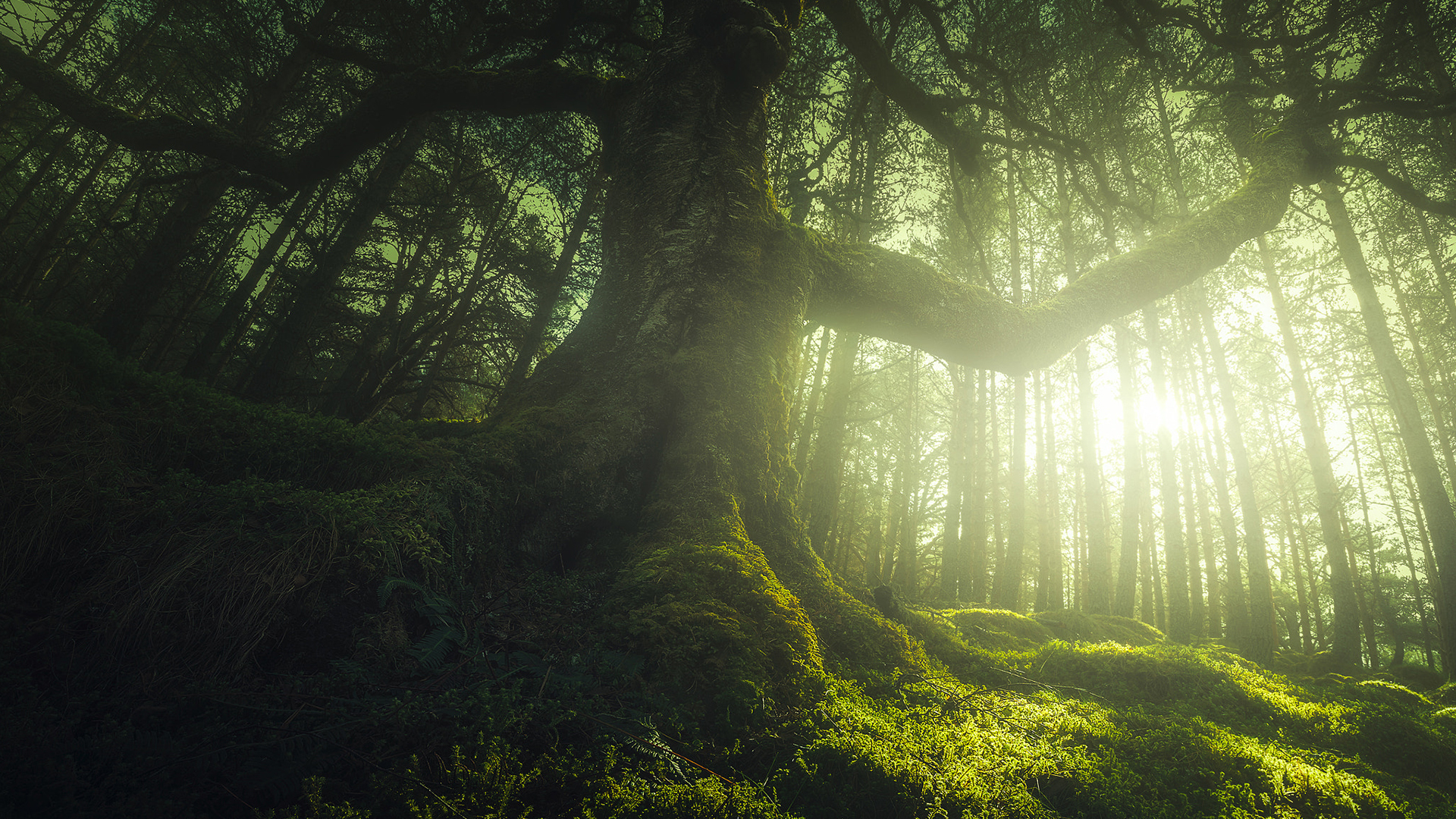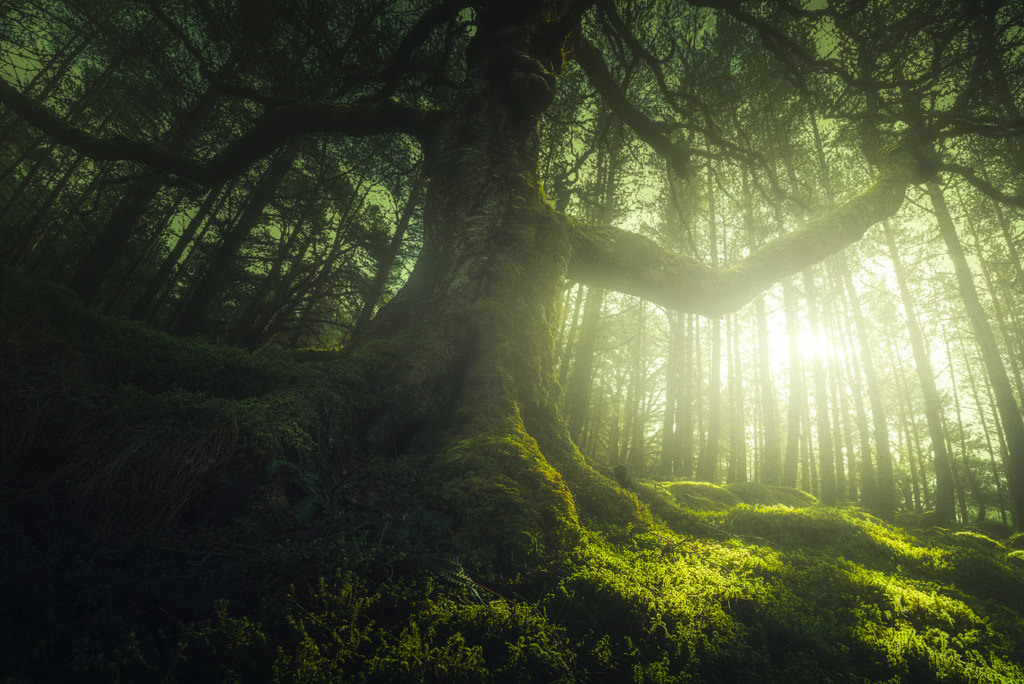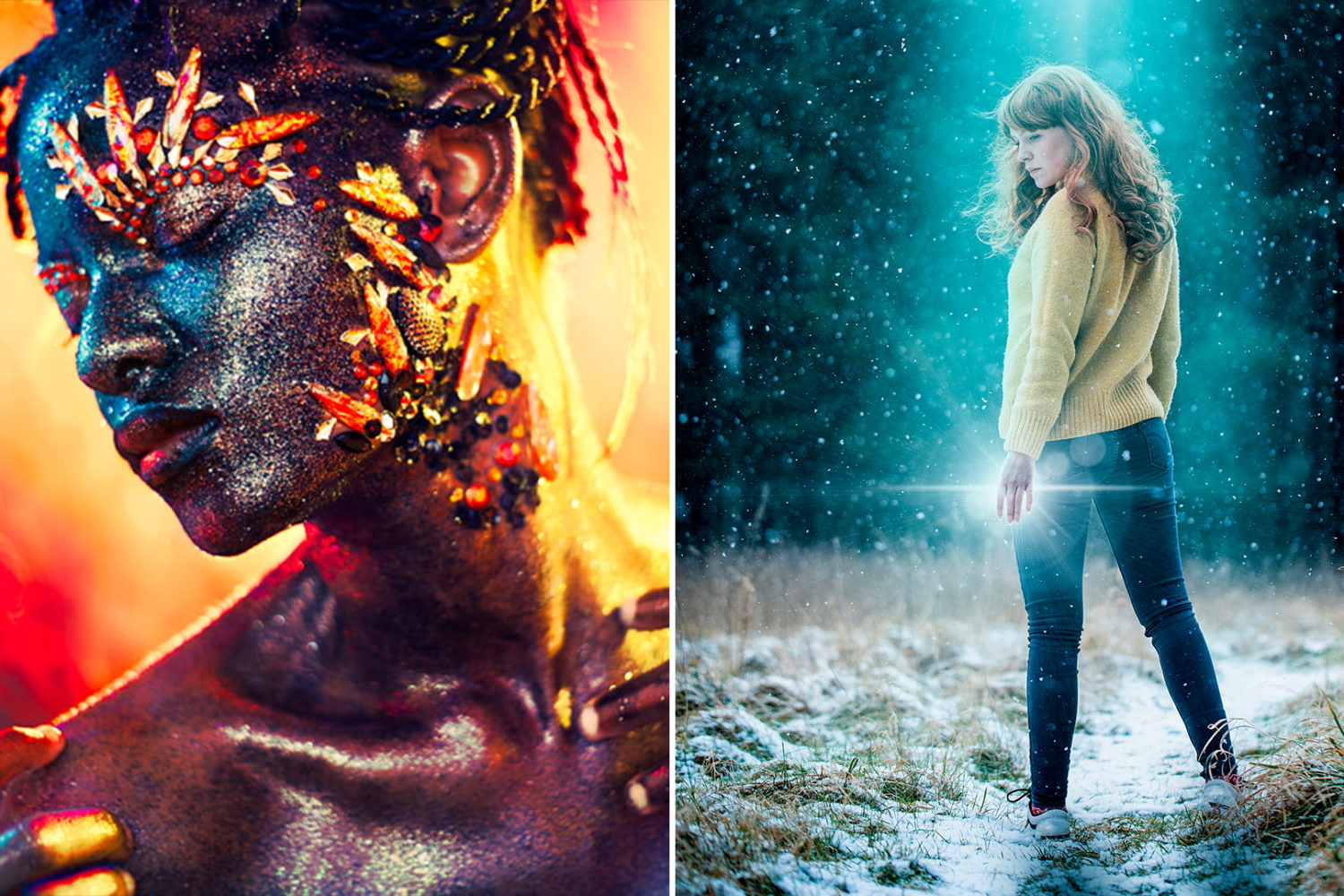Trees invoke a sense of timelessness and grandeur. Most species grow for many centuries more than humans ever will—so let’s make trees look the part, with these tips on capturing them with a wide-angle lens.
The inspiration
I’ve just finished watching The Lord of the Rings for the 12th time, so I’m sure that’s had some influence on my creative process. I am definitely inspired by the cinematography of the late Andrew Lesnie, responsible for many of the atmospheric imagery found in Peter Jackson trilogies. Then there’s Magic: The Gathering; a collecting card game set in a fantasy world. The artwork displayed on these cards often boasts crazy perspectives and interesting points of view. Occasionally, I’ll bring some cards for inspiration along on workshops in forests, before instructing students to shoot the forest canopy.
The best trees for the job
Of course, then there’s the challenge of actually finding trees that match the inspiration. I prefer beech trees because of their stature, maturity potential, and often ominous-looking branches. But the latter can also be photographed well if your subject is a gnarly oak. The broadleaf woodland is the area you’ll want to explore for this type of photography, but in some parts of the world, spectacular variations on the genre can be found. Like bristlecone pine in the southwest United States, for example. On a recent exploration in Glen Feshie, Scotland, I found the this silver birch equally fit for the job. The tree shown below rises from the edge of a dark mixed woodland. With the sun shining slightly through the clouds, the atmosphere was perfect.
Finding epic trees online
Everything can be found online these days—even the diameter of trees around the globe. MonumentalTrees.com is a huge database of the most stunning trees that are still around. At present, there are 28,597 trees documented, ranging from anything from a couple of meters to ~30 meters in circumference. The website features an interactive map, helping you explore the area digitally before heading out to the forest prepared.
Catch the rays
The most ethereal atmospheres can be captured in the right conditions. But did you know that it doesn’t even have to be misty to catch those mystical rays? Godrays (which are actually called crepuscular rays) can be found in the forest occasionally, but it depends on the amount and height of the foliage blocking the sun. At about two hours after sunrise, when the sun barely rises above the shrubbery, the slightest amount of moisture from the night before gets burned off: that results in a fleeting moment of foggy conditions, in which you can photograph those elusive shafts of light peeking through the leaves.
Go low
There’s a whole set of challenges involved when you shoot trees from a frog’s perspective. My first piece of advice is to get close enough to the tree, so that you’re barely able to focus at minimum focus distance. This really creates a distorted view, because objects like plants, roots and flowers in the immediate foreground can appear larger than the actual subject of the tree. The goal is to have an interesting foreground, with a bright background.
Focusing and exposure
The first challenge is to get everything in sharp focus. The easiest option is to set the aperture on your wide-angle to f/22, while aiming for a third into the frame. But as diffraction at that aperture prevents you from getting sharp results, I want to stress that focus stacking is the best tool to get engaging images. In aperture priority mode, dial in an aperture of about f/6.3 and turn (yeah, manually) the focus ring all the way towards the minimum focus distance.
Judge the exposure (darker is better), take note of the settings and set the camera to manual mode at those settings. You can boost the ISO to counteract the swaying of leaves in the foreground. When the image is exposed correctly, you can then turn the focus ring further away and repeat. Do this 4 to 8 times, depending on the focal length of the lens you’re using. Diagonal fisheyes are done with 4 shots at f/6.3, while 30mm lenses benefit from an additional 4 exposures.

Reviewing
With your camera pointed upward, you can’t judge the image unless you either dig a hole to put your head in and view the screen, or omit dirty hands and get a camera with a tilting screen. I use the Nikon D750 at the moment, but this camera only makes reviewing the image accessible when shooting a horizontal orientation. Quite often in vertical orientation images, I still guess at the composition and start the focus stack after a quick look by turning the ballhead on the tripod, but leaving the legs in position.
Key points
Here’s my best advice for ethereal-looking pictures of trees:
- A wide-angle lens works best when you get up-close-and-personal with your subject. Get low, close, and point up for dramatic impact.
- Getting close involves challenging focusing situations. Learning to focus stack overcomes the limitations of technology and yields the sharpest results.
- The best time to photograph is shortly after sunrise, when the sun climbs above the tree line and helps to dissipate moisture from the night before.
- A camera with an articulating screen makes sure you don’t alter the composition between judging the exposure and the start of a focus stack.
- Go ahead and explore MonumentalTrees.com to explore epic trees in your area.
Daniel Laan is a professional landscape photographer from the Netherlands. He teaches landscape photography to fellow photographers around the world through his workshops, Skype sessions, and through his essays on creative landscape photography. His intrinsic fascination with the cosmos, landscapes, and every living thing keeps his passion fuelled with inspiration.
Follow him on 500px, his website, and on Facebook.
This article originally appeared on PetaPixel.











Leave a reply